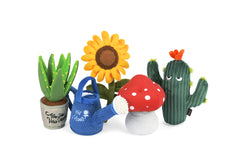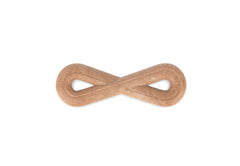They say that a dog is a man’s best friend, but that feeling is mutual. For many dogs, being right by your side is their favorite place to be. The downside to this is that your dog can start to suffer from separation anxiety when you go out. This can be quite a serious condition if it isn’t diagnosed, and the symptoms and stress are left to fester.
Most dogs will show at least a mild form of this condition as it’s incredibly common. A recent study showed that almost three-quarters of the 13 000 dogs monitored showed signs of separation anxiety. It’s not always a cause for concern, but if you think your pet may be a sufferer, you need to take action.
What Causes Separation Anxiety?
Separation anxiety is most prevalent in dogs with some kind of traumatic experience early on in their lives. Being abandoned or abused as a puppy often causes this kind of disorder when they finally reach their forever home. The animal becomes concerned that it will lose the safe space it's only just found when you go out for a while.
Big changes in the home can also bring about the onset of separation anxiety. This can happen even in dogs that have been in a stable environment their entire life. In this case, it’s just likely that the animal was genetically predisposed towards an anxiety disorder.
Changes such as someone moving out or a loss of a family member can be a major stressor. An addition to the family – a new baby or a new pet – can trigger anxiety. An alteration to the home routine is another trigger known to bring about the onset of the disorder. These can include someone who was usually at home a lot, suddenly spending long periods away, renovations, or new regular visitors.
What Does Separation Anxiety Look Like?
Separation anxiety doesn’t always look the same in every dog. There’s a broad spectrum of symptoms that can indicate that it's present. However, some common signs occur when the dog is left alone or when the person they’re closest to leaves. These signs include:
- Constant barking or whining
- Digging in the garden
- Chewing furniture or household objects
- Pacing, panting and refusing to settle
- Peeing in the house even though they’re house trained
The biggest problem that pet owners face is that they don’t usually see much of this behavior as it mostly occurs when you’re away from home. However, your neighbors will usually let you know if there’s been endless barking, and you’ll possibly see the results of some of the other telltale signs.
If you suspect that your dog is suffering from separation anxiety, consider setting up cameras in your home to see what they get up to when you leave. You can also ask a neighbor to watch the dog from their garden to see how they behave. Understanding what the problem is will help you to help your dog and ease their suffering.
3 Ways To Help Your Dog Cope
Once you’ve diagnosed separation anxiety in your dog, there are a few ways to help alleviate their stress.
Treats Can Do The Trick
Sometimes, you just need to let your dog learn that it’s not all bad when you leave. If you give them a treat like a bone or something else tasty to chew when you go out, you’ll help them to associate you leaving with something happy.
The treat should be something that lasts a long time, so it will distract them from the moment of your leaving and continue to keep them busy after that. If they can eat the treat too quickly, they’ll forget all about it and focus on the fact that you’re not there.
Play The Stay Game
If your dog isn’t used to being left alone or having their favorite human not around much, you can get them used to the idea. This should be done by making a game out of it.
Start by telling your dog to stay and then leave the house. For very anxious dogs, just go for a few seconds and build up to leaving the property. Each time you come back, greet your dog but try not to make a big deal of the moment. They follow your cues, and if you make a fuss about going away and coming back, they will too.
In severe cases, you may need to start even slower. If your dog gets anxious when you’re getting ready to go, you can start by picking up your keys randomly throughout the day and not leaving the house. Remember to ask your dog to stay and then walk into another room. When you come back into the room, tell them what a good dog they are.
Ask An Expert
You may need to consult your vet or an animal psychiatrist about anti-anxiety medication in the most serious cases. Dog Prozac or a similar calming medication is regularly prescribed and can be a huge help. If you prefer a more holistic approach, there are plenty of natural calming supplements that you can try, such as CBD oil.
Medication isn’t a long-term solution, but it will help break the cycle of anxiety and give you a gap to start building new, better behavioral habits.
The process for dealing with separation anxiety can take a long time, but it’s worth it for a happier, healthier dog. The most important factor is to remain consistent in your program and not get upset or stressed if it’s not working.
If you’re really at your wit’s end, ask a trainer or behaviorist for specialized advice specific to your dog and home. They can often see something that you can’t thanks to their training and distance from the situation.
Whatever your course of action, it will make a difference, and your dog will be all the better for it.
About the Author:

With a background in holistic medicine, Amelia Palmer is an editor and writer at MDRN CBD covering a variety of topics. When she’s not writing, you can find her volunteering at her local animal shelter or at the dog park with her two rescues, Bandit & Belle.








